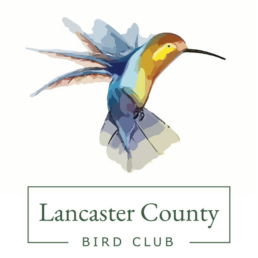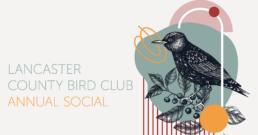Lancaster County Bird Club—What's the Frequency, Kenneth?
Lancaster County Bird Club, Monthly Club Meeting
“What’s the Frequency, Kenneth? How new technology is linking community science and ornithological research around the world”
Presented by David La Puma, Cellular Tracking Technologies
The shrinking of technology coupled with the interconnectedness of our devices is resulting in novel ways for us to better study and conserve species around the globe. How are community scientists and disparate bird observatories and research institutions leveraging these new resources? Find out on November 14th!
David La Puma has been delivering exciting and engaging presentations to audiences far and wide for over two decades. His passion of bird migration, and the emergent technology used to study it cannot be overemphasized; and if you’ve seen him talk you know how infectious this passion can be. In 2019 David began a new career with Cellular Tracking Technologies, a high-tech company pushing the boundaries of what is possible in wildlife tracking. As the Vice President of Global Market Development, David is responsible for helping bird observatories and other entities around the globe design and implement cutting-edge wildlife tracking infrastructure and deploy the next generation of tracking technology. For the five years prior David was the director of New Jersey Audubon’s Cape May Bird Observatory where his responsibilities included monitoring migration at one of the world’s most important migration concentration points, with long-term research of raptor, waterbird, songbirds, and butterfly migration engrained in the DNA of the observatory. Prior to his position with CMBO, David was a product specialist for Leica Sport Optics where he developed the Leica Birding Team and continues to be a Leica Pro Staff member today. For over two decades David has conducted research on subjects ranging from endangered species management of the Cape Sable Seaside Sparrow and fire ecology of the Florida Everglades to the use of radar to quantify stopover habitat for migratory birds and the use of long-term datasets to detect meaningful change in wildlife populations.
Lancaster County Bird Club—Piping Plovers
Lancaster County Bird Club
 After a 60-year absence, Piping Plovers are now once again calling Gull Point at Presque Isle State Park their summer home. Nesting there since 2017, they have contributed to the endangered Great Lakes population in a meaningful way and afforded us with the opportunity to learn more about these charismatic shorebirds. They have also provided moments of deep sadness as well as sublime joy. Birdsong will provide an overview of the Great Lakes population and touch on highlights from the last seven years of monitoring.
After a 60-year absence, Piping Plovers are now once again calling Gull Point at Presque Isle State Park their summer home. Nesting there since 2017, they have contributed to the endangered Great Lakes population in a meaningful way and afforded us with the opportunity to learn more about these charismatic shorebirds. They have also provided moments of deep sadness as well as sublime joy. Birdsong will provide an overview of the Great Lakes population and touch on highlights from the last seven years of monitoring.
Mary Birdsong is co-founder and Lead Shorebird Monitor for Erie Bird Observatory. She has been monitoring shorebirds, particularly Piping Plovers since 2013. She is also a freelance writer and artist. She shares her home with her husband Mike Plyler and two gray tabby cats, and is the proud Busia to three granddaughters and one grandson.
Annual Bird Club Social—Member Event
All North Museum Members and Explorer Society are exclusively invited to join the Lancaster County Bird Club for their 2nd Annual Social. Enjoy refreshments and fellowship before exploring the Museum’s world-class Ornithological Collection at North Museum of Nature and Science.
The evening will include short presentations from Bird Club and Museum experts, providing an overview of the Ornithological Collection—how it came to be and the ways it is still used for research purposes. The museum has an outstanding collection of well over 1,000 taxidermy birds from all over the globe, including extinct species. This prized catalogue of both rare and local specimens wonderfully represents the amazing world of Class Aves.
Not a North Museum Explorer Society or Member yet? Click here to learn more.



